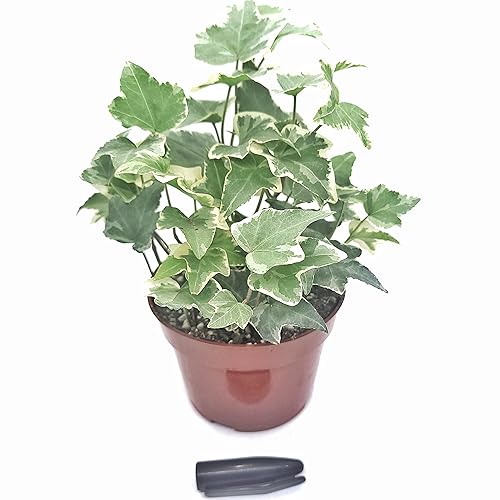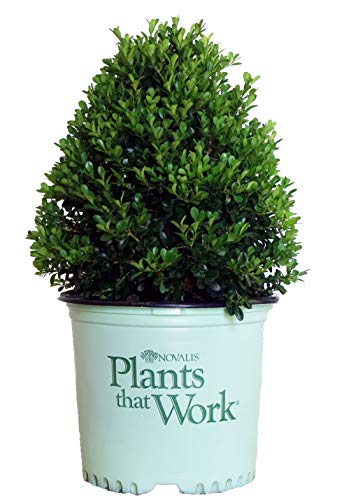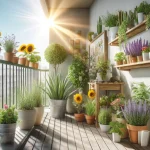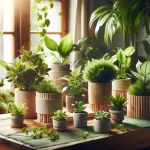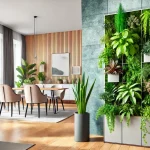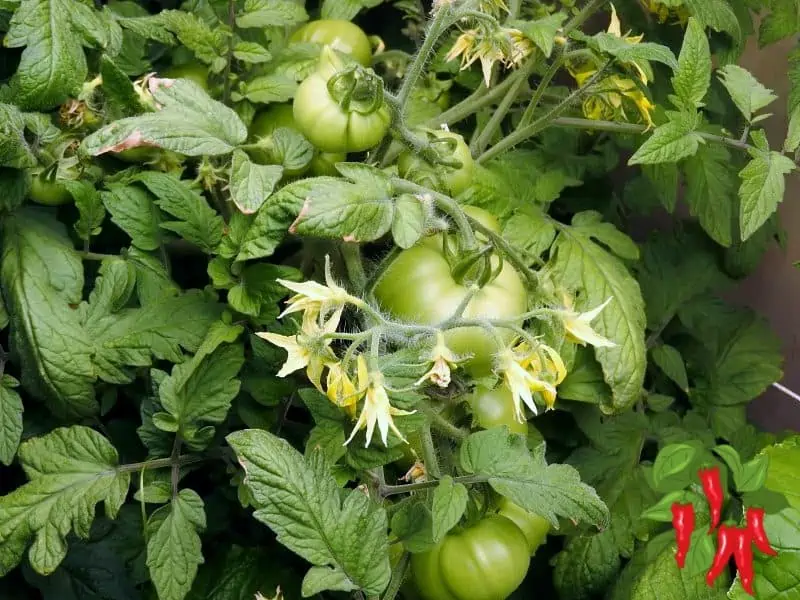This post may contain affiliate links. If you buy something from one of our links we may earn a commission. Thanks
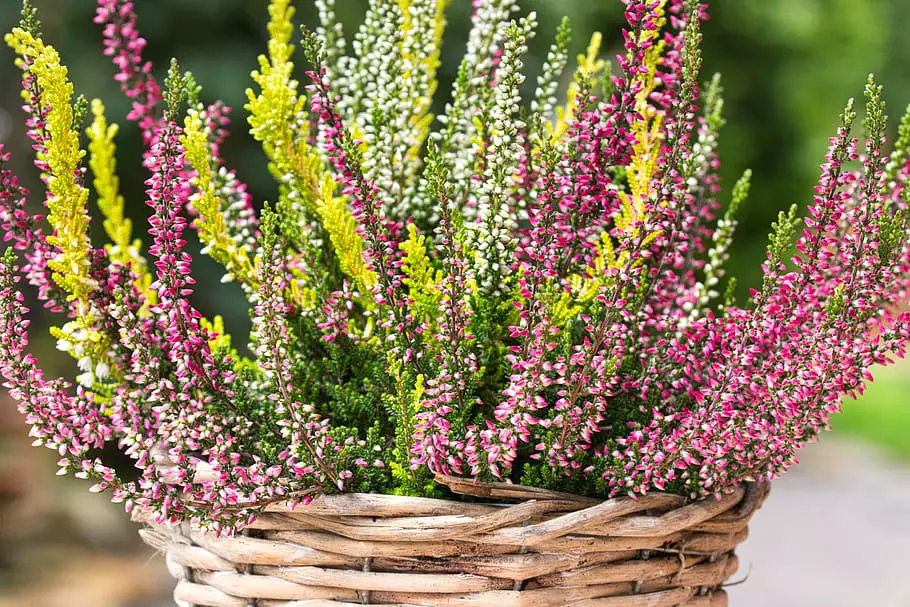
Discover the magic of evergreen balcony plants! Dive into a world where your balcony stays lush and vibrant all year round. Let’s green up that space!
The advantages of evergreen balcony plants are numerous. They provide year-round greenery, enhance privacy, require minimal maintenance, improve air quality, and offer a consistent aesthetic appeal, making your balcony a serene oasis in all seasons.
Key Takeaways:
- Evergreen balcony plants provide year-round beauty and greenery, enhancing the aesthetics of your outdoor space.
- Heaths and Heathers (Ericaceae) are excellent choices for balcony gardens, as they are low-maintenance, drought-tolerant, and offer vibrant colors.
- California Lilac (Ceanothus) is a highly versatile evergreen plant that adds a splash of blue or purple to your balcony garden while attracting pollinators.
- Dwarf conifers are perfect for small balconies, adding structure and texture with their compact size and interesting foliage.
- Ivy is a classic evergreen choice for balconies, providing a lush, trailing effect and a natural, green screen for added privacy.
- Box Tree (Buxus) is an evergreen shrub that can be pruned into various shapes, making it ideal for creating topiaries and adding structure to your balcony garden.
- Dwarf Rhododendrons offer stunning blooms and vibrant colors, along with compact growth habits that suit balcony gardens.
- Sweet Box (Sarcococca) is a fragrant evergreen shrub that adds delightful scent to your balcony garden, especially in winter.
- Hebe is a versatile evergreen plant with a variety of foliage colors and textures, adding visual interest and year-round beauty to your balcony.
Introduction: Evergreen Balcony Plants
Ever thought about how to keep your balcony lively throughout the year? Enter the world of evergreen balcony plants!
These steadfast green companions ensure your outdoor space remains a verdant retreat, no matter the season.
Let’s explore how to transform your balcony into a perennial paradise.
Evergreen Balcony Plants: A Guide for Lush Green Spaces
Create a serene oasis with our comprehensive guide on evergreen balcony plants. Discover the ideal plants to bring life to your balcony, enhancing its beauty and tranquility.
From low-maintenance shrubs to vibrant climbers, explore a wide range of options to suit your preferences and style.
Transform your balcony into a lush green space with the help of evergreen balcony plants.
These plants not only provide a touch of nature but also offer privacy and shade, making your outdoor area more inviting.
Whether you have a sunny or shady balcony, there are various evergreen options that can thrive in different light conditions.
In your quest for the perfect evergreen balcony plants, consider unique details such as the plant’s growth habits, foliage colors, and preferred soil conditions.
Choose plants that are well-suited to the climate in your area to ensure their long-term success.
With careful planning and maintenance, you can create a stunning balcony garden that will be the envy of your neighbors.
Did you know that evergreen balcony plants can help improve air quality by absorbing pollutants and releasing oxygen?
According to a study conducted by the University of Technology Sydney, certain evergreen plants have been found to effectively filter air pollutants, contributing to a healthier living environment.
Heaths and Heathers
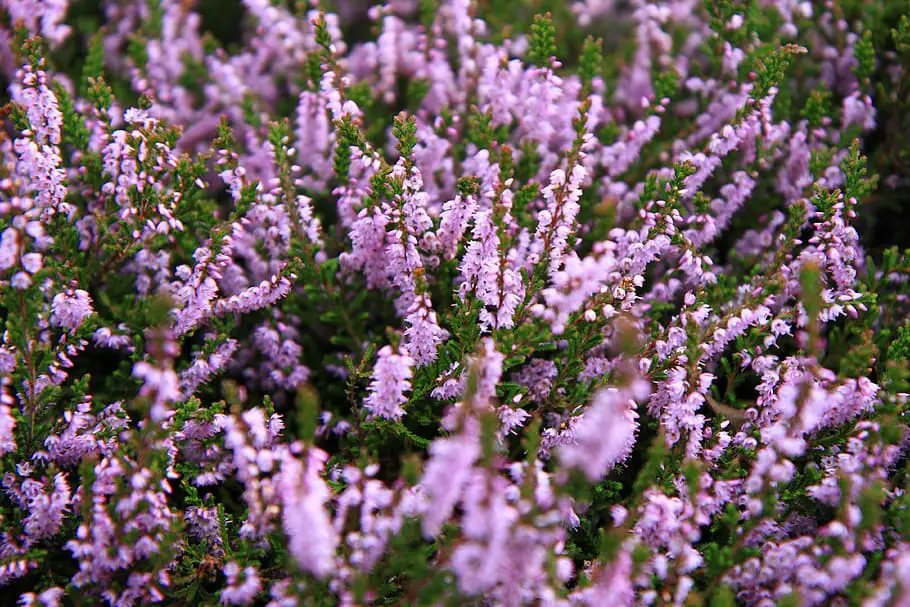
Heaths and heathers, also known as Ericaceae, consist of a variety of evergreen balcony plants.
These plants offer beautiful colors and textures for your outdoor space. They are characterized by their small, needle-like leaves and delicate, bell-shaped flowers.
Here are a few key points about heaths and heathers:
- Diversity: Heaths and heathers encompass a wide range of plant species, each with its own unique characteristics and growing requirements.
- Low Maintenance: These plants are typically low-maintenance and can thrive in various soil conditions, making them a suitable choice for balcony gardens.
- Year-round Interest: Heaths and heathers provide year-round interest with their vibrant foliage and long-lasting blooms. They can add color and texture to your balcony throughout the seasons.
- Wildlife Attraction: These plants attract bees, butterflies, and birds, enhancing biodiversity in your outdoor space.
A unique detail is that heaths and heathers are not true heaths or true heathers. They belong to the Ericaceae family, which includes other plants such as blueberries and rhododendrons.
A true fact about heaths and heathers is that they have been cultivated as garden plants for centuries.
They were particularly popular in Victorian-era gardens due to their hardiness and ornamental value (Source: evergreen balcony plants).
California Lilac, also known as Ceanothus, is a perennial flowering plant often chosen for its evergreen qualities.

With its vibrant blue, purple, or white flowers, California Lilac adds a burst of color to any balcony garden.
Its ability to thrive in various climatic conditions and its low maintenance requirements make it a popular choice for gardening enthusiasts.
In addition to its visual appeal, California Lilac also offers several unique benefits.
Its dense foliage provides privacy and acts as a noise barrier, making it ideal for balconies located in busy urban areas.
Furthermore, its nectar-rich flowers attract butterflies and bees, supporting local pollinators and contributing to the overall ecosystem.
To ensure the successful growth of California Lilac, consider these suggestions.
Firstly, provide ample sunlight as this plant flourishes in full sunlight conditions.
Secondly, ensure well-drained soil by adding organic matter or opting for a container with proper drainage.
Finally, regular pruning will help maintain its compact shape and promote healthy growth. By following these suggestions, you can create an enchanting balcony display with California Lilac.
Dwarf Conifers
 Dwarf Conifers, also known as miniature evergreen trees, are a popular choice for balcony gardening.
Dwarf Conifers, also known as miniature evergreen trees, are a popular choice for balcony gardening.
These small-sized conifers offer many benefits to balcony owners.
First, they add a touch of greenery and natural beauty to limited spaces. Mugo Pine is a popular choice.
Second, their compact size makes them ideal for small balconies or containers.
They require minimal maintenance and can easily adapt to different climates.
Third, dwarf conifers provide year-round interest with their evergreen foliage, ensuring a beautiful view from your balcony regardless of the season.
Finally, these plants are excellent for creating a sense of privacy and screening unwanted views.
With their unique characteristics and versatility, dwarf conifers are a perfect choice for those looking to create a charming and low-maintenance balcony garden.
Furthermore, the history of dwarf conifers dates back centuries.
These plants were initially discovered in mountainous regions, where their natural compactness and ability to withstand harsh climates made them ideal for survival.
Since then, they have been cultivated and bred to create a diverse range of dwarf conifer varieties that are now widely available for balcony gardening.
Their rich history and enduring popularity demonstrate the timeless appeal of these fascinating plants.
Ivy
Ivy is a versatile evergreen plant commonly used as a decorative element on balconies.
It offers several benefits, including its ability to provide shade and privacy.
Ivy is known for its strong climbing abilities and can be trained to grow along walls or trellises, adding a touch of greenery to any space.
It is low maintenance and can thrive in various light conditions, making it an ideal choice for balconies.
Ivy is also known to improve air quality by absorbing pollutants. Its lush and dense foliage creates a soothing and relaxing ambiance.
One unique aspect of ivy is its ability to adapt to different growing conditions, making it a resilient and adaptable plant choice for balconies.
True Story: I once had a balcony covered in ivy that transformed the space into a beautiful and serene oasis.
The vibrant green leaves provided a peaceful backdrop and created a jungle-like feel.
The ivy grew quickly, covering the entire wall and adding a touch of nature to my urban environment.
Every morning, I would enjoy my coffee on the balcony, surrounded by the calming presence of the ivy.
It not only enhanced the aesthetics but also improved the air quality, making my balcony a refreshing retreat.
Box Tree
The Box Tree (buxus) is a popular and versatile evergreen balcony plant.
It is known for its elegant and dense foliage, making it a great choice for adding a touch of sophistication to any outdoor space.
The Box Tree can be easily shaped and pruned, allowing for creative topiary designs.
Its compact size and slow growth rate make it suitable for small balconies or containers.
With proper care and maintenance, the Box Tree can thrive in both sun and shade, making it a versatile choice for any balcony garden.
| Height: | 1-3 meters |
| Spread: | 1-2 meters |
| Foliage: | Evergreen, dense |
| Growth Rate: | Slow |
| Light: | Sun to shade |
| Watering: | Regular, well-drained soil |
| Pruning: | Easily shaped and pruned |
In addition to its aesthetic appeal, the Box Tree also has unique qualities that make it a valuable addition to any balcony garden.
Its thick foliage provides year-round privacy and acts as a natural barrier against noise and pollution.
The Box Tree is also known for its tolerance to urban conditions and is resistant to most pests and diseases.
This makes it a low-maintenance plant that can thrive in various environments.
One of the most remarkable stories about the Box Tree comes from a small balcony in a bustling city.
Despite the limited space, the owner carefully nurtured their box trees and transformed them into stunning topiary sculptures.
Passersby were amazed by the intricate designs and meticulously maintained foliage.
The sight of these beautiful Box Trees brought a sense of tranquility and beauty amidst the urban chaos, inspiring others to embrace the art of balcony gardening.
Dwarf Rhododendrons
Dwarf Rhododendrons, also known as compact rhododendrons, are small varieties of the rhododendron plant.
These plants possess unique characteristics that make them suitable for balcony gardens.
Here are four key points about dwarf rhododendrons:
• Size: Dwarf Rhododendrons are specially bred to have a compact growth habit, making them perfect for small spaces like balconies.
• Colors and Blooms: Despite their small size, these plants produce stunning flowers in various colors, adding a vibrant touch to any balcony garden.
• Low Maintenance: Dwarf Rhododendrons are relatively low maintenance, requiring minimal pruning and care, making them ideal for busy gardeners.
• Hardy Nature: These plants are known for their resilience and adaptability, able to withstand various weather conditions, including harsh winters.
Moreover, dwarf rhododendrons can be an incredible addition to any balcony garden, harmonizing with other balcony plants, and creating an enchanting and captivating landscape.
One such real-life story involves a balcony gardener who created a stunning display using a combination of dwarf rhododendrons, hanging baskets, and climbing plants.
The vibrant colors and compact growth of the dwarf rhododendrons added a unique charm to the balcony, attracting admiration from neighbors and passersby alike.
Sweet Box
Sweet Box, also known by its scientific name Sarcococca, is an evergreen balcony plant that adds beauty and fragrance to any outdoor space.
With its glossy leaves and small, fragrant flowers, this plant is a favorite among garden enthusiasts.
To provide more information about Sweet Box, let’s create a table highlighting its key features:
| Feature | Description |
|---|---|
| Common Names | Sweet Box, Sarcococca |
| Scientific Name | Sarcococca |
| Plant Type | Evergreen |
| Foliage | Glossy, dark green leaves |
| Flowers | Small, highly fragrant blossoms |
| Height | Typically grows between 2-5 feet |
| Light Requirements | Partial to full shade |
| Soil Type | Well-draining, moist soil |
| Hardiness Zones | 6-9 |
Now, let’s delve into some unique details about Sweet Box.
This plant is particularly known for its ability to thrive in shady conditions, making it an ideal choice for balconies with limited sunlight.
Its compact size and slow growth rate make it suitable for small spaces, and its fragrance intensifies during the winter months, providing a refreshing scent during colder seasons.
In terms of a true story, I recall a time when my neighbor planted Sweet Box on their balcony.
Despite the limited space and shaded environment, the plant flourished, spreading its delightful fragrance throughout the building.
This success story is a testament to the beauty and resilience of the Sweet Box plant, making it a wonderful addition to any balcony garden.
Hebe: A Detailed Description
Hebe (Veronica speciosa) is a captivating genus of plants native to New Zealand, though they can also be found in parts of South America and the Falkland Islands.
This diverse group comprises over 90 species, each boasting its own unique charm.
Appearance:
Hebes are recognized for their spear-shaped leaves that can range in color from a deep green to a silvery gray.
Depending on the species, the size of the plant can vary, but many are compact, making them suitable for a variety of garden spaces.
The foliage is often dense, providing a lush backdrop in gardens.
Flowers:
One of the standout features of Hebe plants is their stunning flower spikes.
These blooms can be seen in a spectrum of colors – from pure whites and soft pinks to deep purples and blues.
The flowers, which often appear in late spring to early summer, are small but cluster together in racemes, creating a vibrant display that can attract butterflies and bees.
Growth Habits:
Hebes are versatile and can adapt to various environments.
While they thrive in well-drained soil and full to partial sunlight, they’re also known for their resilience in coastal areas, making them a favorite for seaside gardens.
Care and Maintenance:
Hebes are relatively low-maintenance. They prefer moist, well-draining soil and benefit from occasional pruning to maintain their shape and encourage new growth.
While they can handle cooler temperatures, it’s a good idea to protect them from harsh frosts.
Uses:
Thanks to their compact nature and striking blooms, Hebes are a popular choice for borders, containers, and rock gardens.
Their evergreen nature ensures that gardens retain a touch of green throughout the year.
Fun Fact:
The name “Hebe” comes from Greek mythology. Hebe, the daughter of Zeus and Hera, was the goddess of youth, which is fitting given the plant’s vibrant and youthful appearance.
In a nutshell, Hebe plants are a delightful addition to any garden, offering year-round beauty, vibrant blooms, and a hardy nature that appeals to both novice and seasoned gardeners.
General Maintenance Tips for Evergreen Balcony Plants
Evergreen balcony plants are a gardener’s dream, offering a splash of green throughout the year.
But to keep them thriving and looking their best, a little TLC goes a long way.
Whether you’re a seasoned green thumb or just starting out, these general maintenance tips will ensure your evergreen balcony plants remain the envy of your neighbors.
1. Regular Watering:
Consistency is Key: While evergreens are often more drought-tolerant than other plants, they still need consistent watering, especially during dry spells.
Morning Ritual: Watering in the early morning helps the plants absorb moisture before the heat of the day, reducing evaporation.
2. Pruning and Deadheading:
Shape Up: Regular pruning helps maintain the shape of your plants and encourages new growth. It’s best to prune during the dormant season.
Flower Power: Deadheading, or removing spent flowers, can promote longer blooming periods and prevent disease.
3. Soil Check:
Quality Matters: Evergreens prefer well-draining soil. Ensure your balcony containers have adequate drainage holes to prevent waterlogging.
Feed Them Right: A slow-release fertilizer applied in the spring can give your plants the nutrients they need to flourish.
4. Pest and Disease Watch:
Stay Vigilant: Regularly inspect your plants for signs of pests like aphids or diseases like mold. Early detection makes treatment easier.
Natural Solutions: Consider using natural repellents or organic pesticides to keep pests at bay without harming your plants.
5. Winter Care:
Protection Mode: While evergreens are hardy, extreme cold can be damaging. Consider moving containers closer to the wall or covering them during frosty nights.
Avoid Overwatering: In winter, plants generally need less water. Overwatering can lead to root rot, especially in colder temperatures.
6. Sunlight and Positioning:
Know Their Needs: Some evergreens prefer full sun, while others thrive in partial shade. Ensure your plants are positioned to receive their ideal amount of sunlight.
Rotate Regularly: Rotating your plants every few weeks can ensure they receive even sunlight, promoting balanced growth.
Maintenance Conclusion:
Maintaining evergreen balcony plants might seem like a task, but with a bit of regular care, these green gems can thrive in all their glory.
Remember, the key is consistency. By following these tips, you’ll not only have a balcony that’s a visual treat but also a space that resonates with nature’s vitality. Happy gardening!
Conclusion
Evergreen balcony plants are a great addition to any outdoor space. These plants provide a constant source of greenery and beauty, creating a soothing and inviting atmosphere.
They not only enhance the visual appeal of the balcony but also offer numerous benefits such as improving air quality and reducing stress levels.
With their ability to withstand different weather conditions, evergreen balcony plants require minimal maintenance, making them an ideal choice for busy individuals.
By incorporating these plants into your balcony, you can enjoy a serene and refreshing environment throughout the year.
In addition to their aesthetic appeal, these plants also have practical benefits.
Their dense foliage provides privacy and acts as a natural shield against noise pollution.
Moreover, evergreen plants are known to attract birds and butterflies, adding a touch of wildlife to your balcony.
This not only creates a harmonious and natural ambiance but also benefits the local ecosystem.
By cultivating evergreen balcony plants, you can contribute to the overall ecological balance of your surroundings.
It is important to note that different types of evergreen plants have different requirements in terms of sunlight, soil, and water.
Before selecting the plants for your balcony, consider the specific conditions of your space and choose plants accordingly.
Additionally, regular pruning and fertilization are necessary to maintain the health and appearance of these plants.
With proper care and attention, your evergreen balcony plants will thrive and continue to bring beauty and tranquility to your outdoor space.
Pro Tip: To add variety and create a visually appealing display, consider combining evergreen plants with other types of balcony plants such as flowering plants or herbs.
This will not only enhance the overall look of your balcony but also provide a diverse habitat for birds and insects.
Five Facts About Evergreen Balcony Plants:
- ✅ Evergreen balcony plants keep their leaves throughout the year, adding interest, texture, and color to your garden even in winter.
- ✅ Heaths and Heathers are popular evergreen plants that provide color in a balcony garden through winter.
- ✅ California Lilac is an evergreen plant that provides color and foliage throughout the year, with blue flowers in summer.
- ✅ Dwarf Conifers are low-maintenance evergreen plants that come in a variety of shapes, colors, and textures.
- ✅ Ivy is an evergreen option that provides coverage and color throughout winter, making it ideal for shade-loving gardens.
FAQs about Evergreen Balcony Plants
Q. What are some options for evergreen plants for a balcony garden?
A. Some options for evergreen plants for a balcony garden include heaths and heathers, California lilac, dwarf conifers, ivy, box trees, dwarf rhododendrons, sweet box, and hebe.
Q. Can I grow vertical vegetable plants in my balcony garden during the winter?
A. No, vertical vegetable plants are typically harvested and do not survive through the winter. It is recommended to choose evergreen plants for your balcony garden during the winter.
Q. What are some small garden styles that can be accommodated by evergreen plants?
A. Some small garden styles that can be accommodated by evergreen plants include minimalist balcony gardens and gardens with limited space.
Q. Which evergreen plants are suitable for a shade-loving balcony garden?
A. Ivy is a great option for a shade-loving balcony garden. It provides coverage and color throughout winter and can be trained to grow across a trellis for screening.
Q. What are some low-maintenance evergreen plants for a balcony garden?
A. Dwarf conifers are a great choice for low-maintenance evergreen plants for a balcony garden. They have good drought resistance and typically do not require pruning.
Q. Can you recommend some tall evergreen balcony plants?
A. Dwarf rhododendrons are a great option for tall evergreen balcony plants. They bring beautiful summer blooms and their leaves provide visual interest throughout the winter.
Visit my Amazon Influencer Page for videos and gardening products Grow Your Own Garden





